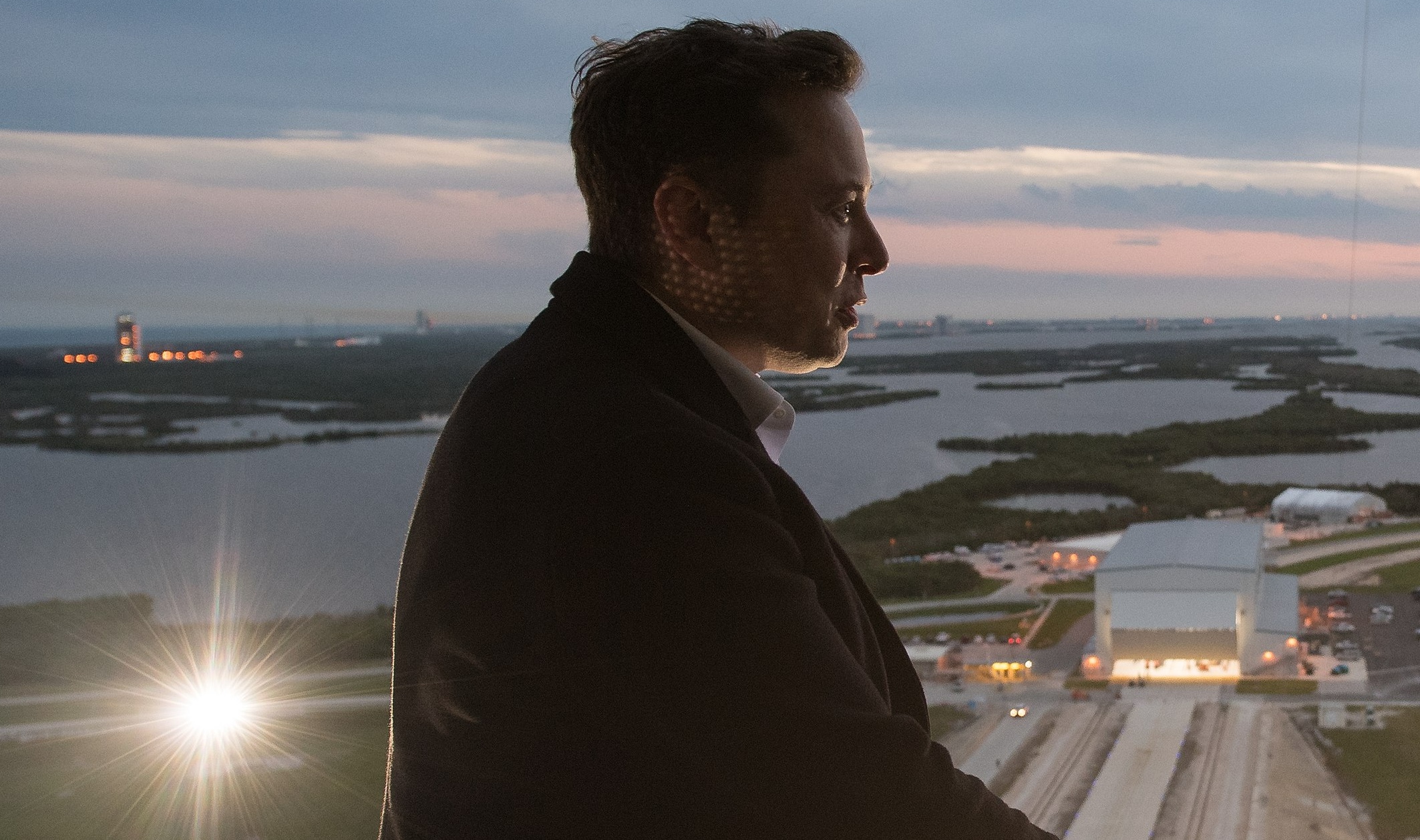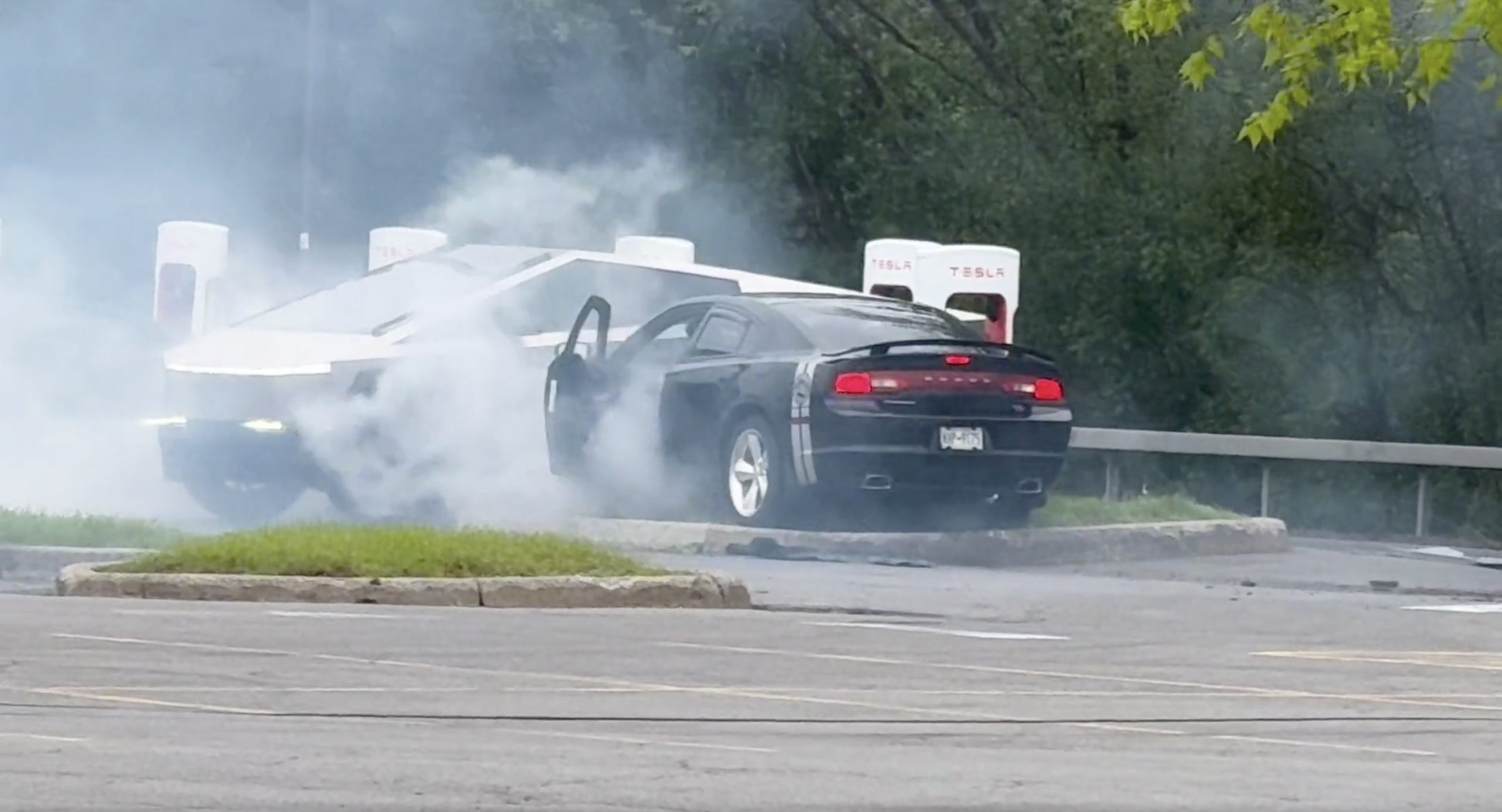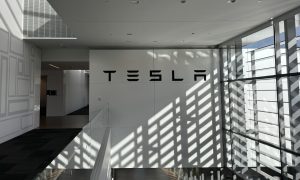

Lifestyle
Tesla owner involved in >$100K legal battle as parking garage blames ‘Autopilot’ for Model 3 crash
A Tesla owner has found himself in the middle of a battle worth over $100,000 in property damages after his Model 3 Performance crashed while being driven out of a valet parking garage. Despite being in the right and having the evidence to back up his claims, the Tesla owner has ended up in an uphill battle that could last for some time.
From Routine to Horror
It was supposed to be a routine process. After having his Model 3 parked at a multi-story garage, the Tesla owner asked for his vehicle to be returned to him. A valet then went on to retrieve the Model 3 from its parking spot. A Teslacam video of the valet driving the vehicle showed that everything seemed normal, despite the parking garage employee driving a bit fast in such a cramped space.
Moments later, the Tesla owner was shocked as part of the parking garage’s second-floor walls came crashing into the sidewalk below. Images taken by the electric car owner after the incident revealed that a vehicle had been partly pushed through the parking garage’s brick walls. Fearing the worst, the Tesla driver ran up to check on the valet and his Model 3.
What he saw confirmed his fears. Smashed against two vehicles was his blue Tesla Model 3 Performance, its front end crushed as it collided with other parked cars.
Unintended “Autopilot” Acceleration
As the valet stumbled out of the Model 3, he promptly claimed that the Tesla suddenly engaged Autopilot and drove itself into the other vehicles. The valet was not joking.
While those inexperienced with Tesla’s tech may find it easy to blame Autopilot to avoid accountability when something terrible happens, those familiar with the driver-assist system know that Autopilot could not be engaged in a number of places. One of these is, of course, a multi-story parking garage. The Model 3 owner then knew something was amiss when the valet told him that “Autopilot” suddenly drove the Tesla into the other vehicles.
The parking garage company claimed innocence by stating that the incident was caused by “unintended acceleration” on the Model 3’s part. The company refused to budge, and the Tesla owner decided to fight all the way. Being familiar with how Tesla stores its vehicles’ data, the Model 3 owner decided to gather so much evidence that there will be no way his insurance company could lose the case.
The Hunt for Evidence
In cases such as these, which involve a party claiming unintended acceleration through “Autopilot,” it is always best to have a Tesla’s Event Data Recorder (EDR) report. The EDR is like the car’s black box, recording everything that has happened in the vehicle. Everything, from the driver’s weight, the vehicle’s speed, which pedals were pressed, and how far they are pressed, could all be determined in the EDR report. The Model 3 owner then contacted Tesla for help in retrieving his car’s records.
Much to his chagrin, Tesla refused, citing legal reasons because he lives outside of California. In a statement to YouTube channel Wham Baam Teslacam, the Model 3 owner remarked that he is not really sure why Tesla refused his request, though he thinks that if it were his lawyer that contacted the electric car maker, the results would have been different. Disappointed but not deterred, the Model 3 owner ended up hiring an EDR technician to retrieve his Tesla’s report. The move cost him $1,300.
The EDR report was damning. A look at the data from the Model 3 showed that the valet was not even wearing a seatbelt while operating the Tesla. The vehicle was also moving reasonably fast for a car being driven out of a multi-story parking garage. But even more importantly, the EDR showed that the valet had applied 100% pressure on the accelerator and 0% pressure on the brake pedal all the way up to the crash. With this data, the Model 3 owner figured that he could ultimately prove that the parking garage’s unintended acceleration claim was untrue.
Denying Evidence
But despite the mountain of evidence provided by the EDR report, the parking garage company decided to dig their heels in the sand and stand by their claim of unintended acceleration. The Model 3 owner’s insurance company has paid out on the multiple claims for the damages that resulted from the incident and have pledged to reimburse him after litigation is finished. But that process could take quite a while.
The incident resulted in $24,000 worth of repairs to the Model 3 Performance. Adding on the damages for the other vehicles involved in the incident and the actual damages to the multi-story building itself, the total cost of property damage from the crash is estimated to be far beyond $100,000.
Ultimately, the Tesla owner’s experience with the parking garage highlights two notable things. One, parking garages and valets should know that it’s tough to lie about what one does in a Tesla since data from the EDR would most definitely show the truth. And second, Tesla’s service has a lot of space for improvement, so owners who approach the company for help after such a harrowing, aggravating incident would not be turned away. An EDR request, especially one by an owner involved in an accident, is better off approved, after all.
Watch Wham Baam Teslacam‘s feature on the remarkable incident in the video below.
Don’t hesitate to contact us for news tips. Just send a message to tips@teslarati.com to give us a heads up.
Elon Musk
X account with 184 followers inadvertently saves US space program amid Musk-Trump row
Needless to say, the X user has far more than 184 followers today after his level-headed feat.

An X user with 184 followers has become the unlikely hero of the United States’ space program by effectively de-escalating a row between SpaceX CEO Elon Musk and President Donald Trump on social media.
Needless to say, the X user has far more than 184 followers today after his level-headed feat.
A Near Fall
During Elon Musk and Donald Trump’s fallout last week, the U.S. President stated in a post on Truth Social that a good way for the United States government to save money would be to terminate subsidies and contracts from the CEO’s companies. Musk responded to Trump’s post by stating that SpaceX will start decommissioning its Dragon spacecraft immediately.
Musk’s comment was received with shock among the space community, partly because the U.S. space program is currently reliant on SpaceX to send supplies and astronauts to the International Space Station (ISS). Without Dragon, the United States will likely have to utilize Russia’s Soyuz for the same services—at a significantly higher price.
X User to the Rescue
It was evident among X users that Musk’s comments about Dragon being decommissioned were posted while emotions were high. It was then no surprise that an X account with 184 followers, @Fab25june, commented on Musk’s post, urging the CEO to rethink his decision. “This is a shame this back and forth. You are both better than this. Cool off and take a step back for a couple days,” the X user wrote in a reply.
Much to the social media platform’s surprise, Musk responded to the user. Even more surprising, the CEO stated that SpaceX would not be decommissioning Dragon after all. “Good advice. Ok, we won’t decommission Dragon,” Musk wrote in a post on X.
Not Planned, But Welcomed
The X user’s comment and Musk’s response were received extremely well by social media users, many of whom noted that @Fab25june’s X comment effectively saved the U.S. space program. In a follow-up comment, the X user, who has over 9,100 followers as of writing, stated that he did not really plan on being a mediator between Musk and Trump.
“Elon Musk replied to me. Somehow, I became the accidental peace broker between two billionaires. I didn’t plan this. I was just being me. Two great minds can do wonders. Sometimes, all it takes is a breather. Grateful for every like, DM, and new follow. Life’s weird. The internet’s weirder. Let’s ride. (Manifesting peace… and maybe a Model Y.)” the X user wrote.
Lifestyle
Tesla Cybertruck takes a bump from epic failing Dodge Charger
The Cybertruck seemed unharmed by the charging Charger.

There comes a time in a driver’s life when one is faced with one’s limitations. For the driver of a Dodge Charger, this time came when he lost control and crashed into a Tesla Cybertruck–an absolute epic fail.
A video of the rather unfortunate incident was shared on the r/TeslaLounge subreddit.
Charging Charger Fails
As could be seen in the video, which was posted on the subreddit by Model Y owner u/Hammer_of_something, a group of teens in a Dodge Charger decided to do some burnouts at a Tesla Supercharger. Unfortunately, the driver of the Charger failed in his burnout or donut attempt, resulting in the mopar sedan going over a curb and bumping a charging Cybertruck.
Ironically, the Dodge Charger seemed to have been parked at a Supercharger stall before its driver decided to perform the failed stunt. This suggests that the vehicle was likely ICE-ing a charging stall before it had its epic fail moment. Amusingly enough, the subreddit member noted that the Cybertruck did not seem like it took any damage at all despite its bump. The Charger, however, seemed like it ran into some trouble after crashing into the truck.
Alleged Aftermath
As per the the r/TeslaLounge subreddit member, the Cybertruck owner came rushing out to his vehicle after the Dodge Charger crashed into it. The Model Y owner then sent over the full video of the incident, which clearly showed the Charger attempting a burnout, failing, and bumping into the Cybertruck. The Cybertruck owner likely appreciated the video, in part because it showed the driver of the Dodge Charger absolutely freaking out after the incident.
The Cybertruck is not an impregnable vehicle, but it can take bumps pretty well thanks to its thick stainless steel body. Based on this video, it appears that the Cybertruck can even take bumps from a charging Charger, all while chilling and charging at a Supercharger. As for the teens in the Dodge, they likely had to provide a long explanation to authorities after the incident, since the cops were called to the location.
Lifestyle
Anti-Elon Musk group crushes Tesla Model 3 with Sherman tank–with unexpected results
Ironically enough, the group’s video ended up highlighting something very positive for Tesla.

Anti-Elon Musk protesters and critics tend to show their disdain for the CEO in various ways, but a recent video from political action group Led By Donkeys definitely takes the cake when it comes to creativity.
Ironially enough, the group’s video also ended up highlighting something very positive for Tesla.
Tank vs. Tesla
In its video, Led By Donkeys featured Ken Turner, a 98-year-old veteran who served in the British army during World War II. The veteran stated that Elon Musk, the richest man in the world, is “using his immense power to support the far-right in Europe, and his money comes from Tesla cars.”
He also noted that he had a message for the Tesla CEO: “We’ve crushed fascism before and we’ll crush it again.” To emphasize his point, the veteran proceeded to drive a Sherman tank over a blue Tesla Model 3 sedan, which, of course, had a plate that read “Fascism.”
The heavy tank crushed the Model 3’s glass roof and windows, much to the delight of Led By Donkeys’ commenters on its official YouTube channel. But at the end of it all, the aftermath of the anti-Elon Musk demonstration ended up showcasing something positive for the electric vehicle maker.
Tesla Model 3 Tanks the Tank?
As could be seen from the wreckage of the Tesla Model 3 after its Sherman encounter, only the glass roof and windows of the all-electric sedan were crushed. Looking at the wreckage of the Model 3, it seemed like its doors could still be opened, and everything on its lower section looked intact.
Considering that a standard M4 Sherman weighs about 66,800 to 84,000 pounds, the Model 3 actually weathered the tank’s assault really well. Granted, the vehicle’s suspension height before the political action group’s demonstration suggests that the Model 3’s high voltage battery had been removed beforehand. But even if it hadn’t been taken off, it seemed like the vehicle’s battery would have survived the heavy ordeal without much incident.
This was highlighted in comments from users on social media platform X, many of whom noted that a person in the Model 3 could very well have survived the ordeal with the Sherman. And that, ultimately, just speaks to the safety of Tesla’s vehicles. There is a reason why Teslas consistently rank among the safest cars on the road, after all.
-

 Elon Musk1 week ago
Elon Musk1 week agoTesla investors will be shocked by Jim Cramer’s latest assessment
-

 Elon Musk3 days ago
Elon Musk3 days agoElon Musk confirms Grok 4 launch on July 9 with livestream event
-

 Elon Musk14 hours ago
Elon Musk14 hours agoxAI launches Grok 4 with new $300/month SuperGrok Heavy subscription
-

 News7 days ago
News7 days agoTesla Model 3 ranks as the safest new car in Europe for 2025, per Euro NCAP tests
-

 Elon Musk2 weeks ago
Elon Musk2 weeks agoA Tesla just delivered itself to a customer autonomously, Elon Musk confirms
-

 Elon Musk1 week ago
Elon Musk1 week agoxAI’s Memphis data center receives air permit despite community criticism
-

 Elon Musk2 weeks ago
Elon Musk2 weeks agoTesla’s Omead Afshar, known as Elon Musk’s right-hand man, leaves company: reports
-

 News2 weeks ago
News2 weeks agoXiaomi CEO congratulates Tesla on first FSD delivery: “We have to continue learning!”
















